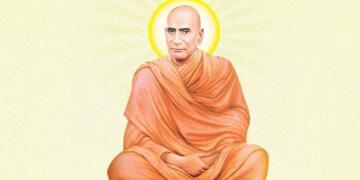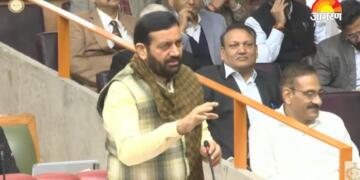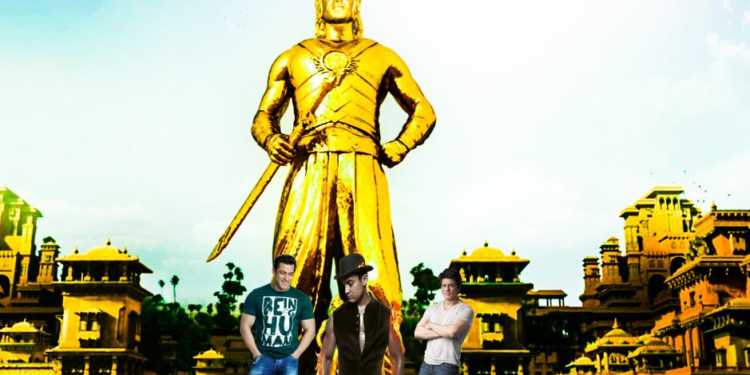The biggest movie of the century so far doesn’t star a Khan. Although it is a love story, it’s not a traditional romance. It has a couple of catchy songs, but I have never heard them being sung. It stars Amisha Patel (and no its not Kaho na, pyar hai). You will all get it now: its most famous supporting star is a Hand pump. Yup, it was Gadar: Ek Prem Katha from 2001. A story of Sikh-Muslim romance that had a solid grounding in a family, had a great, almost superhuman hero, recreated a past era, was the most expensive film till date, was about that hero overcoming great odds not for revenge but for love, and most of all, it evoked passionate nationalism. It makes you wonder why it took so long for Bahubali to recreate that formula.
Bahubali 2(Hindi) is on the track to break Gadar’s record soon. All versions combined it has already earned more than 1000 Crores, creating a new benchmark. Bollywood is all about repeating a successful formula.
Why did it take a Telugu film’s dubbed version to recreate that success? I think the clue is in the fact that Bahubali isn’t a Bollywood film.
Bollywood has embraced another, narrower formula. It comes with lower risk, even if it lowers the rewards in more ways than one. Bollywood has been trying to go global, as exemplified by the other hits of 2001, Lagaan with its Oscar ambitions, and Dil Chahta Hai with its metropolitan, English speaking appeal. These are the paths Indian cinema has treaded since then. We have films about romances of a jet setting generation that could as easily be based in London or Paris as in Mumbai, but hardly ever in, say, Dhulia or Bilaspur, let alone in rural India. Then we have the small scale “spectacles” like Jodha Akbar, Ram-Leela or Bajirao Mastani, which ignore all the realities of India, put on a veneer of an era, but look as if the maker forget to infuse anything like the soul of India, past or present.
That doesn’t seem to be an accident to me. Ever since Dilwale Dulhania Le Jayenge started smashing overseas records, and Bollywood started to make an entry in Top Ten Charts overseas, the lure of easy money has led our makers down a dark path. They are now catering to an audience that hardly understands India. This audience has no real connection, apart from an occasional visit. It doesn’t speak Hindi very well, and doesn’t understand flowery language. Nuances of cultural aspects of India are lost to them, and will only confuse them. So tradition is limited to a distorted Karwa Chauth or a Holi borrowed more from Silsila than the streets of Banaras.
Karan Johar felt comfortable shifting the “desi” part of Ae Dil Hai Mushkil from Lahore to Lucknow, and very few even noticed. (Why it was based in Lahore is a topic for another day). Cultural references of today’s Hindi films are limited to talking about other Bollywood films, sometimes old films of the same “hero”. The cult of the star overshadows all else. It is not a coincidence that, not adjusted for inflation, all but one of the biggest hits have starred a Khan or another. When the content is good, like in Dangal or Sultan, the film reaches the top, but even decidedly subpar films like Kick and Dhoom 3 find a place in all-time top 10, stamped with the brand of one Khan or another.
Bahubali 2 is the odd one out in this group. Prabhas, even after Bahubali (2015) is a relatively unknown entity for most of the Hindi speaking audience, and Rajamouli is a name only a select few would even have heard.What propelled Bahubali 2 then to reach and surpass all the carefully concocted brews of the Mumbai film industry?
Heart and soul.
No one can deny the Bahubali films wear their hearts on their sleeves. They deal with the most basic, but most profound, emotions of love, greed, compassion, jealousy and loyalty. But more than that they deal with the most basic conflict of the soul: between good and evil. In the modern, villain-less world of Hindi films, all decisions are relative, morality is boring, and decisions are only about what makes the hero, or the heroine, happy. Morality is so 20th century, the characters seem to drawl, but they miss the point of making a connection.
The soul is all about making choices. For most, if not nearly all, of us these choices are rooted in the tales we hear. I have often heard that for every moral dilemma you face, Mahabharat has the moral & immoral choices and their consequences spelled out for you. The culture, the mythology, the heroes and villains give us roots. The Bahubali films build on these values.
Remember first heroic act of the hero in both the films. In the first one he lifted the Shivalingam to help his mother fulfill her sacred vow, and in the second he fights and subdues an elephant to help his mother fulfill her sacred vow. This combination of the dutiful and loving son, the devoted mother, and the sacred can never be expected in a Bollywood film of today. Of course it helped that soul was delivered with a huge dose of the spectacular, but even that is something the Hindi films of late have been underperforming on. Ambition has been hamstrung by a lack of confidence. Ambition requires risk, not a calculation of “safe” bets to reach the 100 or the 200 crore “club”.
Read the The Most Honest Bahubali 2 review here
The very essence of clubs is elitism. Even though it is a story of royalty, Bahubali films totally eschew that. Instead they focus on the heroes as the heroes of the masses, happy to live amongst the masses and work for the masses. The elites sometimes can’t “get” what makes this special. This spills over beyond Bollywood as when they are left totally bewildered when a mass leader arises. The wine sipping back room manipulators are taken by a surprise, much like Bhallaldev’s father was in Bahubali.
Bahubali is a spectacular technical achievement. It is a tribute to the hard work of Rajamouli, Prabhas and many many more, but it is not about them. Bahubali is a film about the Indian masses. How rooted they are in their lives, how attached they are to their roots, what they think their heroes ought to be, and what ambition they seem to seek from those who sell them dreams. The dream industry needs to dream bigger and smaller at the same time. Are they up to the challenge?
A Bahubali quiz for you : Which Bahubali character are you?


































